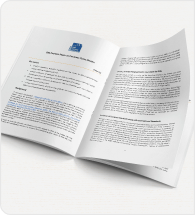Single market benefits: EU trade and SMEs
The creation of the single market in 1993 multiplied opportunities for Small and Medium-sized Enterprises (SMEs). The single market facilitates the free movement of goods, services, capital, and people across the European Economic Area (EEA). This is the EU Member States, Norway, Iceland, Liechtenstein and, to a certain extent, Switzerland . By effectively erasing internal borders, it provides businesses, including SMEs, access to almost 450 million consumers.
Cross-border activities within the EU kept on growing since 2002 and the entry into force of the euro as a single currency . Entrepreneurs across the EU have been increasingly entitled to sell their products in other Member States thanks to the single market, the absence of customs duties, and the existence of common European standards.
In 2019, the European Commission estimated that, mainly due to the removal of tariff and non tariff barriers to trade, the EU Gross Domestic Product (GDP) was between 8% and 9% higher than if the single market did not exist. Furthermore, in 2020, the European Central Bank calculated that the single market has raised real GDP per capita by between 12% and 22% since its inception



























